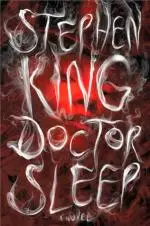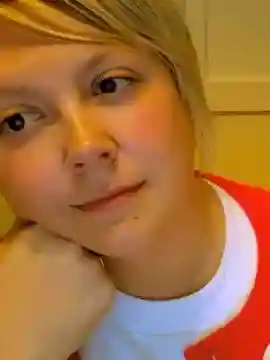I just finished re-reading Stephen King’s The Shining followed immediately by its brand-new sequel, Doctor Sleep. Like many King fans, I’ve waited for years—no, decades—to find out what happened to young Danny Torrance after he escaped the Overlook Hotel. If you’ve been waiting too, today is your day. All is revealed in Doctor Sleep. Friends who saw me with the book immediately started asking, “Is it as good as The Shining? As scary?” Those are questions I expected to be able to definitively answer after finishing both books, but it’s not that simple.
Writers change. Readers change.
 See, the 66-year-old who wrote Doctor Sleep with a practiced pen and a well-earned reputation as the master of his genre is a different writer—probably even a different guy—than the 28-year-old alcoholic who was raising two small children while he wrote The Shining in Boulder, Colorado, in the 1970s. None of us are the same writer in our sixties as we were in our twenties, and that’s a damn good thing. It’s called progress, y’all.
See, the 66-year-old who wrote Doctor Sleep with a practiced pen and a well-earned reputation as the master of his genre is a different writer—probably even a different guy—than the 28-year-old alcoholic who was raising two small children while he wrote The Shining in Boulder, Colorado, in the 1970s. None of us are the same writer in our sixties as we were in our twenties, and that’s a damn good thing. It’s called progress, y’all.
But what I didn’t consider as much until seeing a BBC interview with King is that, as a (constant) reader, I'm different too. King told the BBC, “[I’m] really leery about revisiting the scary books because I feel like a lot of people read those books under the covers with flashlights when they were children themselves—12, 14 years old. And you’ll meet people who say, ‘[The Shining or Salem’s Lot] really scared the hell out of me,’ and I’m thinking to myself, ‘Well, sure, you were easy. You were 14 and… shaking in your shoes.’ So the fear is that people will come back expecting that kind of scare as grownups and that just never happens.” And he’s absolutely right.
I was around 15 the first time I experienced The Shining. After my parents had gone to sleep, I would hold my breath in bed, listening to the house settle. I was sure (so sure!) that every creak was the long-dead woman-thing from Room 217, bloated and creeping toward my bedroom full of Teen Beat posters and Lisa Frank stickers. I was, as King points out, an “easy” scare. During my recent re-read of The Shining, I was shocked at my ability to drift into pleasant dreams immediately after reading scenes involving guileful topiary animals and haunted ballrooms. Writers change. Readers change. Our fears evolve.
Doctor Sleep‘s release gives us the perfect opportunity to look at how our fears change over time, but before we go too far down that path, a quick refresher on The Shining for the uninitiated and a bare bones spoiler-avoidant plot summary of Doctor Sleep for those about to rock:
The story so far…
In King’s 1977 horror classic (the book is 36 years old, but I’ll still give a warning: this paragraph contains SPOILERS), alcoholic writer Jack Torrance (who King has referred to as the most autobiographical character he has ever written) accepts a job as the winter caretaker of an isolated hotel in the Rocky Mountains. The hotel happens to be chock full o’ all kinds of evil and ghosts, but that doesn’t become apparent until the snow has left Jack and his family (wife Wendy and son Danny) cut off from civilization. Five-year-old Danny has psychic powers (aka “the shining”) that cause him to see the hotel’s various specters and spooks. The hotel’s evil force wants Danny for his power and attempts to manipulate Jack into killing his family, so that they’ll be trapped there forever. Jack goes nuts, grabs a mallet and starts chasing Wendy and Danny around the hotel while all hell breaks loose with the ghosts and spirits. In the end, the hotel’s boiler blows the whole place sky high because Jack’s been too distracted by the whole psychopathic murdering thing to diligently keep up with his caretaking duties. He dies in the fire. Wendy and Danny escape with the help of a snowmobile brought in by the hotel’s chef, who also “shines” and was mentally summoned by Danny.
As an aside, if you only know The Shining from watching Stanley Kubrick’s wildly popular 1980 film version, you’re missing out. King himself despises the movie, claiming it minimizes the supernatural elements of the story, makes Jack seem like he’s got a major screw loose before the Torrance family even moves to Colorado, and turns Wendy in to a “misogynistic” scream queen stereotype. Take the time to read the original novel before you delve into Doctor Sleep.
Danny becomes Dan…
Doctor Sleep picks up only a year after the Overlook Hotel has burned to the ground. Seeing six-year-old Danny again is nostalgic and a lot of fun while it lasts, but what we really want to see is Danny as an adult (ahem, it’s “Dan” now, all grown-up-like) and King doesn’t leave us waiting long. Note: I’m about to give you some basic plot, but I’ll avoid spoilers and it’s nothing that the press releases and any article you read about the book won’t immediately tell you.
Adult Dan Torrance is a bit of a hot mess when we first meet him—an alcoholic like his father, a drifter, and a guy who has made more than his fair share of poor life choices. His shining is dulled by alcohol and age but reappears after he cleans up his act and takes a job at a New Hampshire hospice. There, his ability to soothe dying patients as they transition from this world earns him the nickname Doctor Sleep. By the way, Dan’s going to be with us the whole way, but don’t expect all the action to be laser focused around him. Come to the table ready to meet some new folks, see some new places, and hear a whole new story, and you’ll be fine.
Not far away, a little girl named Abra is born with an extraordinarily strong dose of the shining (and a bit of a temper—King fans might notice that with worse parents, fewer friends, and a bucket of pig’s blood, she might well have grown up to be Carrie). She uses her unusual powers to reach out to Dan and they develop a connection over time. Unfortunately, Dan isn’t the only one to pick up on Abra’s shine. Her powers draw the attention of the True Knot, a group of vampire-esque serial killers who feed on fear and pain and also happen to disguise themselves as RV-driving retirees. A nail-biting battle of good versus evil ensues.
Comparing fears
On the surface, The Shining seems more frightening. It is packed with far more typical horror scares—dead things rustling leaves in dark tunnels, evil hedge animals that move when you’re not looking, fire hoses that slither snake-like down dim hallways—but in many ways, the fears evoked by Doctor Sleep—fears of regret, death, the past, and the ghosts we all hold inside ourselves—strike a deeper chord. It takes longer for those types of fears to sink in, but once they do, there’s not a bogeyman in the world that can hold a candle to them. There’ll be plenty of people (many of them the readers King mentioned who read The Shining with flashlights under the covers during their youth) who will read Doctor Sleep and claim it isn’t nearly as terrifying as The Shining, but in the interest of fairness—and of evolution—here are three ways the sequel is even more horrifying than its predecessor.
Fear 1: The Overlook vs. The True Knot
Let’s start with villains. The Shining‘s are slightly less straightforward, but let’s take the most direct approach. Sure, Jack had demons. He made mistakes. He was vulnerable to the evil that lived within The Overlook Hotel, but he wasn’t the true villain. Even when he was hacking at the wallpaper with a roque mallet and trying to choke out his wife, King (and Danny) made sure to let us know that it was the Overlook, not Jack himself, that was to blame. It was the Overlook that wanted Danny dead. The Overlook that was calling the shots. As a villain, the Overlook is terrifying. There’s no reasoning with it. It is mysterious and nebulous in a way that prevents you from determining what tricks it has at its disposal. It is pure evil—and manipulative, to boot.
At first glance, it doesn’t appear that Doctor Sleep’s True Knot can compare. They are, after all, driving Winnebagos across America’s interstates while sporting Wal-Mart mom jeans and visors—even if they are pulling over to feed on fear, pain, and misery from time to time. More importantly, from a scare perspective, they are not pure evil. They care about each other and show a fairly wide range of emotions that suggest some level of humanity remains. But if you stop to think about it too much, those brilliant disguises and remnants of humanity are exactly what makes them disturbing.
I’ve always loved horror movies. When I was younger, my mother used to tell me that supernatural movies never scared her because she knew the ghosts and ghouls weren’t real. “What scares me,” she told me once, “are the things that could really happen… the evil people who look completely normal to friends and neighbors but have a basement full of body parts.” At the time, I didn't understand how she could watch demons possess a little girl then go straight to sleep. Now I do. As we grow up, the monsters that give us nightmares become more complex. Sure, we still have the odd moment when we imagine a slithery tentacle creeping onto our pillows as we sleep, but deep down, we understand that the monsters we truly need to worry about aren’t under our beds; they're walking past us on the street, and they look just like us. Because of that the True Knot rivals the Overlook for terror.
Fear 2: Isolation vs. Movement
 When the snow drifts cover the doors and the windows of the Overlook, all that’s left are rows and rows of identical doors... and behind those doors, bloated dead things. It’s enough to send any horror fan’s blood pressure through the roof. I visited the Stanley Hotel, on which the Overlook is based, last year, and just standing in the halls gave me major heebie-jeebies. The unrelenting claustrophobic isolation in The Shining is truly dread-inducing and part of that novel’s power, but if you’re expecting that in its sequel, you’ll be disappointed. Doctor Sleep is all wide-open interstate highways and movement, but that only means there are more potential victims. No one is safe from the True Knot or from the tragedies they feed off of—not you, not me, and most alarmingly of all, not the people we care about.
When the snow drifts cover the doors and the windows of the Overlook, all that’s left are rows and rows of identical doors... and behind those doors, bloated dead things. It’s enough to send any horror fan’s blood pressure through the roof. I visited the Stanley Hotel, on which the Overlook is based, last year, and just standing in the halls gave me major heebie-jeebies. The unrelenting claustrophobic isolation in The Shining is truly dread-inducing and part of that novel’s power, but if you’re expecting that in its sequel, you’ll be disappointed. Doctor Sleep is all wide-open interstate highways and movement, but that only means there are more potential victims. No one is safe from the True Knot or from the tragedies they feed off of—not you, not me, and most alarmingly of all, not the people we care about.
Fear 3: Death vs. Death
Like any good horror novel, both books play on our fear of death, but this is where Doctor Sleep’s more mature approach puts it ahead of The Shining. While five-year-old Danny is obviously frightened for his life at the Overlook, that fear is colored by the sense of invincibility that his youth brings. He worries but it’s an immature worry, death through the eyes of a child. He’s too busy dodging topiaries and mallets to contemplate his own mortality in any emotional sense.
Doctor Sleep, on the other hand, hits you right in the guts more than once with the inevitability of death, the fear of closing your eyes for the last time, the pain of watching someone you love slip away, the sheer agony that can reduce a dignified human being to a crumpled body screaming like an animal caught in a trap. Before Dan reprises his role as “Dr. Sleep” by helping the patients in his care die peacefully, many have heart-wrenching flashbacks of special times in their lives. The knowledge that we’ll lose all of those memories, all of those moments, in the end and the vivid, impossible-to-ignore way King presents that message is, at times, brutal enough to make the Overlook look like child’s play. It is Doctor Sleep’s most haunting scare. It keeps catching up to me when I’m not expecting it. Well played, King.
In the end, it doesn’t matter which is the more goosebump-inducing tale. If you’re a King fan, this is not one to miss. His storytelling is as on-point as ever, and catching up with Dan Torrance feels like hanging out with an old friend for 500 pages. Do you have expectations going into this sequel? If so, what do you want out of Doctor Sleep? What would delight you? What would disappoint you? Let’s hear it in the comments.

About the author
Kimberly Turner is an internet entrepreneur, DJ, editor, beekeeper, linguist, traveler, and writer. This either makes her exceptionally well-rounded or slightly crazy; it’s hard to say which. She spent a decade as a journalist and magazine editor in Australia and the U.S. and is now working (very, very slowly) on her first novel. She holds a B.A. in Creative Writing and an M.A. in Applied Linguistics and lives in Atlanta, Georgia, with her husband, two cats, ten fish, and roughly 60,000 bees.







